Spaceship Earth - Meeting the challenges for living on the Blue Planet under siege
A Peter Wall Institute for Advanced Studies International Roundtable, 5 to 9 May 2014
"We need new narratives that connect with peoples’ deepest motivations and promote more radical action. Stories engage people at every level - not just in their minds but in their emotions, values and imaginations, which are the drivers of real change. So if we want to transform society, we must learn to tell - and listen to - a new set of stories about the world we want to create.” Simon Hodges, Storyteller
We're changing our Planet in significant ways by failing to live sustainably, consuming resources and altering the Earth beyond its regenerative capabilities. How do we live within the boundaries of our Blue Planet? This can be accomplished, but it will require a new way of thinking and the joining of very different skills and perspectives. More than anything else, looking to the future, we need to consider different ways of doing and being.
Urgent!
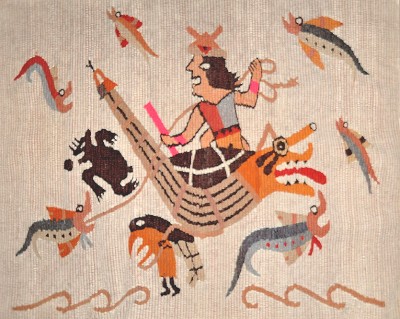 Oceans are a vital life source for the planet, covering close to 70% of the earth’s surface. The collective disregard to our own natural environment has taken heavy tolls on the living conditions and survival of all species, including humans – and we are unprepared for the catastrophic impacts that our economies and ecologies are facing both now, and into the future.
Oceans are a vital life source for the planet, covering close to 70% of the earth’s surface. The collective disregard to our own natural environment has taken heavy tolls on the living conditions and survival of all species, including humans – and we are unprepared for the catastrophic impacts that our economies and ecologies are facing both now, and into the future.
Degradation is occurring faster than expected – so states the 2013 International Programme on the State of the Ocean (IPSO). Scientific research typically assesses the impacts of oceanic degradation in decades and centuries, yet we have reached a critical point where some impacts can be seen already in terms of months and years. The changes that our entire Earth system is currently experiencing are rapid and profound. Although we cannot predict the future accurately, we need to act now, as stewards of life on this planet.
Science or technological innovation can only go so far. It is time to take a fundamentally new approach.
A Unique Roundtable:
Spaceship Earth – Meeting challenges of living on the Blue Planet under siege is a roundtable to be convened by the Peter Wall Institute at UBC, Vancouver from May 5th to 9th, 2014. It is an outstanding, unique and creative dialogue space between top scholars, artists, scientists, educators, First Nations leaders, practitioners, policy-makers, citizens and the oceans.
Blending science, arts, diverse disciplines, cultures and practices, the Roundtable aims to create the conditions to discover rich trajectories to our individual and collective sustainability in relation to maritime and coastal sub-systems. We are taking a participatory approach to create the conditions for new collective intelligence and new storylines to emerge.
- What are the new stories?
- Where does the greatest potential lie?
- How do the oceans want to participate in our collective future?
The Roundtable will be hosted in Vancouver at the Peter Wall Institute for Advanced Studies at the University of British Columbia. The site itself invites us to engage with a unique bioregion, which includes the wild coastal ecology, the institutional vibrancy of the university, and the local cultural heritage in a local and global context of dialogue and discovery.
Vision, Goals & Outcomes
The ultimate goal of this interdisciplinary roundtable is to identify actions and outcomes that reflect new trans-disciplinary research questions, and leverage opportunities for evolving our practices.
Our oceans are facing "unimaginable" changes as a consequence of acidification, fisheries collapse, sea level rise, and the ongoing pan-oceanic pollution disasters by oil, plastic and nuclear industries. The roundtable will highlight positive messaging and collective wisdom to enhance public awareness and grassroots action for ocean global health.
For the long-term agenda, we will generate new questions and collaborations. Offer a framework for leaders and practitioners, researcher and artists to continue blending their respective fields of enquiry with more experimental practices in sustainability.
We look to inspire life-long learning by making the science readily accessible to teachers, students and other non-specialist publics by facilitating imaginative and high-impact teaching and practice in relation to community action and school curricula.
Our highly original, participatory programme is designed to incite creative and resonant collaborations and strengthen existing ones between scientists, artists and practitioners for social change in critically engaged science and practice. Our outcomes will serve as a mosaic platform for innovative cooperation and critical engagement with citizens worldwide.
Join our Public Conversation!
On May 8, 2014 we are inviting the wider university and sustainability community into the conversation, complete with art performance and interactive dialogue. This session will share critical insights of the workshop with a broader audience at the University of British Columbia (UBC) and beyond, and seek to inspire innovative, creative approaches to sustainability challenges among attendees.
We are grateful of the support of the Peter Wall Institute for Advanced Studies and invite everyone joining the roundtable to share their diverse cultural perspectives, disciplinary views, societal expectations and gender filters. We trust that those joining will be rewarded with inspiring novel insights, knowledge and collaborative opportunities for action.
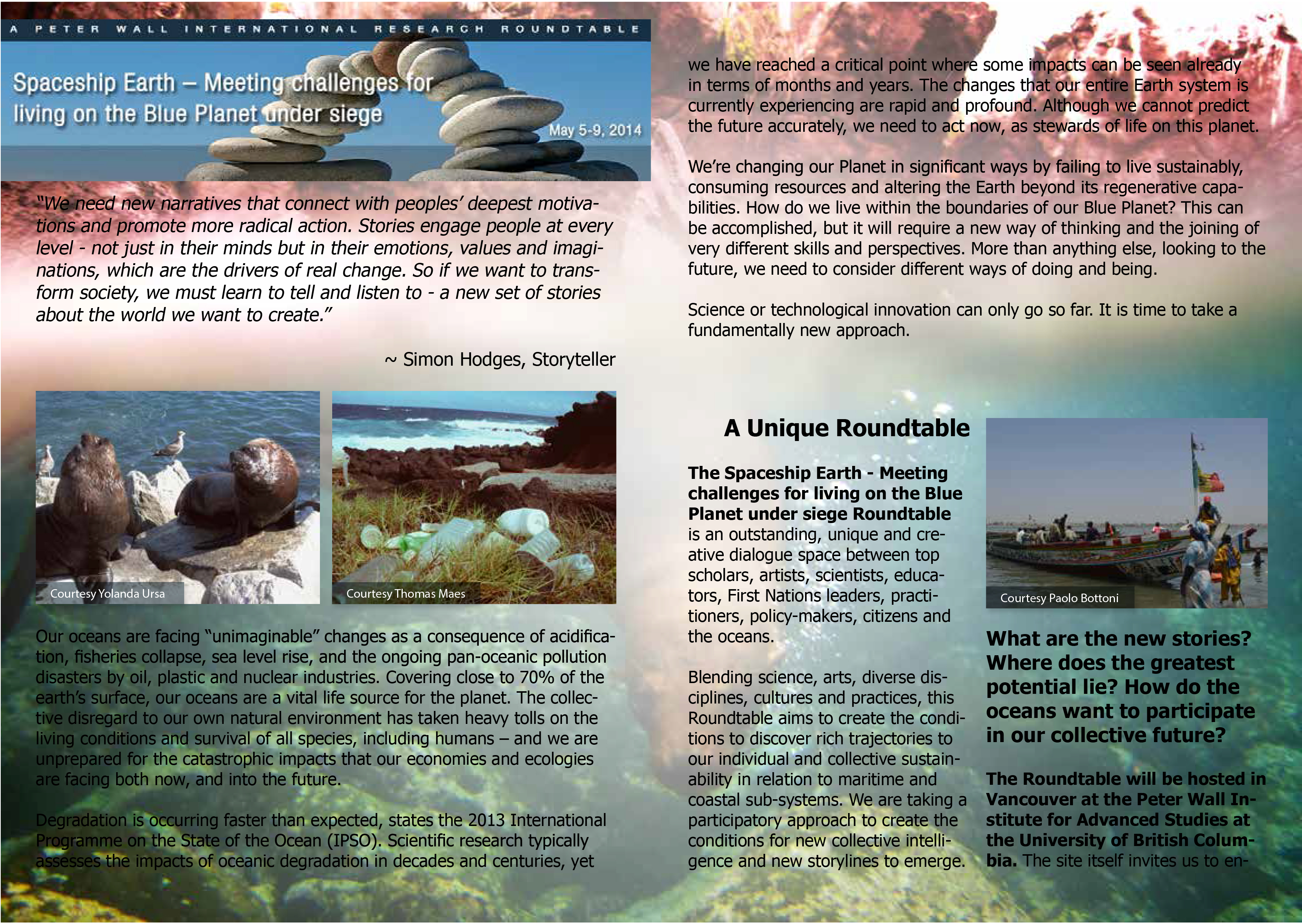
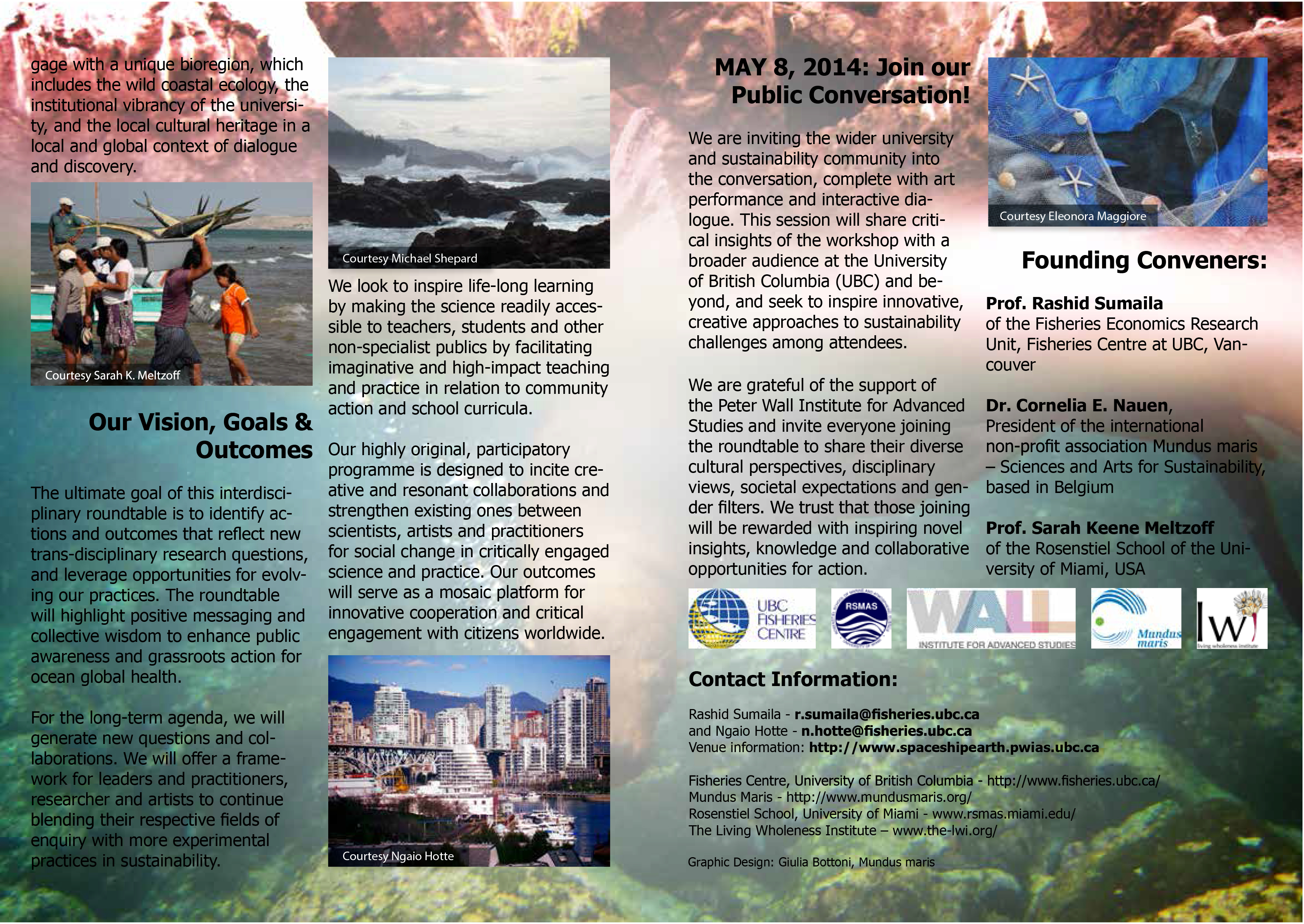
The roundtable is convened by Prof. Rashid Sumaila, Director of the Fisheries Centre at UBC, Vancouver; Dr. Cornelia E. Nauen, President of the international non-profit association Mundus maris – Sciences and Arts for Sustainability, Belgium; and Associate Prof. Sarah Keene Meltzoff of the Rosenstiel School of the University of Miami.
Click here for the specific website of the Roundtable hosted by PWIAS.

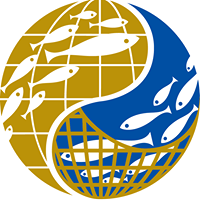
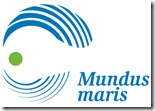

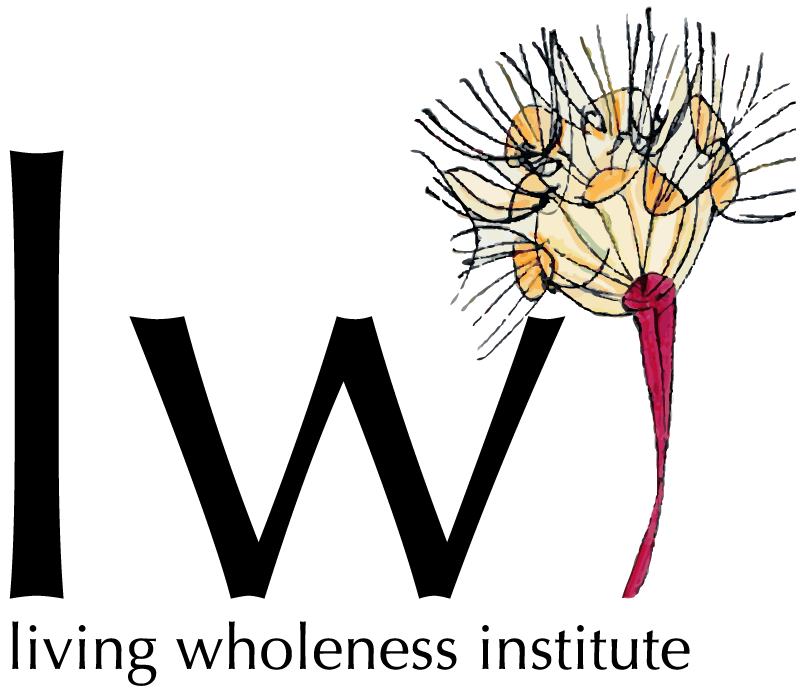
Conversation with the Ocean
Thursday, May 8, 2014
7:30 pm - 9:45 pm
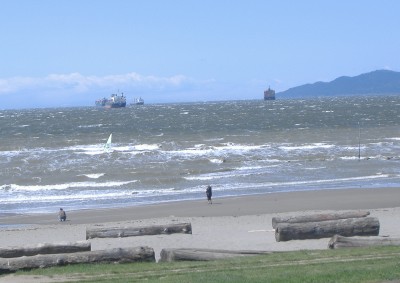 Roy Barnett Recital Hall
Roy Barnett Recital Hall
School of Music, UBC
6361 Memorial Road
Vancouver
Admission is free, but seating is limited.
Register online
Evening Program:
7:30 pm - Welcome
7:35 pm - Song, “For Broken and Tired am I”
7:45 pm - “Art and Sustainability” with David Maggs
8:00 pm - Voice of the Whale
8:30 pm - Intermission and refreshments
9:00 pm - Reflections
9:10 pm - Piano performance, Naomi Takagi
9:25 pm - Song, “Sure on this Shining Night”
9:30 pm - Key messages
Click here for the poster announcement.
From the announcements to how it really worked out. Read on about a memorable week spent discovering new perspectives about the oceans and how we can reconnect together.
Day One - Discovering the diversity in the room
Opening
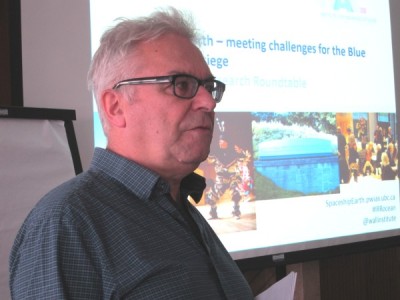 Derek Gregory, Distinguished Professor at Peter Wall Institute for Advanced Studies (PWIAS) extended a warm welcome to the participants on behalf of former Executive Director, Janis Sarra. He underscored the appreciation of the innovative and participatory approach chosen for this roundtable and expressed the expectation of PWIAS to garner interesting results.
Derek Gregory, Distinguished Professor at Peter Wall Institute for Advanced Studies (PWIAS) extended a warm welcome to the participants on behalf of former Executive Director, Janis Sarra. He underscored the appreciation of the innovative and participatory approach chosen for this roundtable and expressed the expectation of PWIAS to garner interesting results.
Beau Dick, Hereditary Chief of the Kwakwaka'wakw and wood carver, performed a ceremonial song to atune all participants to the unceded territories of the First Nations in British Columbia.
U. Rashid Sumaila, Cornelia E Nauen and Sarah K. Meltzoff as principal investigators of the roundtable joined Derek in welcoming participants and inviting them to address together the major challenges to our oceans and seek new ways to connect to the issues and to one another.
They were joined via skype by Vanessa Reid who, together with Maria Scordialos, had partnered in the preparations and specifically in the design, but could not be part of the hosting team in person.
Ngaio Hotte as coordinator and co-host added her voice to the welcome and looked forward to a productive week together.
Checking-in – who's in the room?
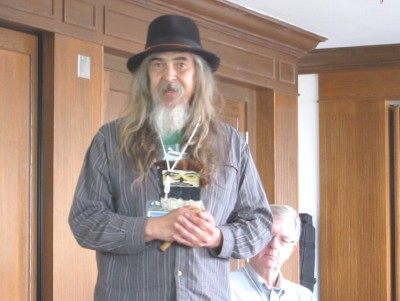 Ngaio then invited participants to present themselves guided by three questions:
Ngaio then invited participants to present themselves guided by three questions:
-
What draws you to this conversation?
-
What do you bring to the roundtable in terms of expertise, experience, inspiration?
-
Share the story about the object you brought that connects you to the ocean.
As one participant after another spoke, generously sharing their expertise and their very personal stories of how they were connected to the ocean, the amazing diversity in the room became evident.
Most participants were working in the Vancouver area, thus had initimate knowledge of the place.
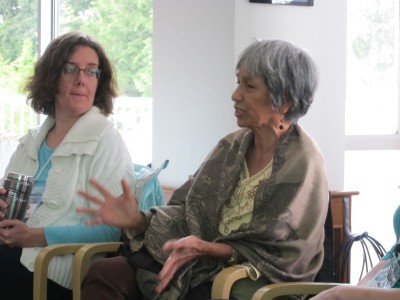 Their stories blended beautifully with those of the participants from more distant places, all drawn to the gathering by their concern for the oceans.
Their stories blended beautifully with those of the participants from more distant places, all drawn to the gathering by their concern for the oceans.
They always had an unexpected and often very personal angle to them, showing deep connections, passion and commitment, beyond the public personality.
There was Naomi Takagi, a confirmed organist, recalling how her family's trajectory had been bound up with fisheries and the ocean.
Francisco Alarcón, Lecturer at the Department of Spanish and Portuguese, University of California Davis, and a poet and writer of childrens' books gave samples of how the attention of young people could be drawn to the oceans and their amazing creatures.
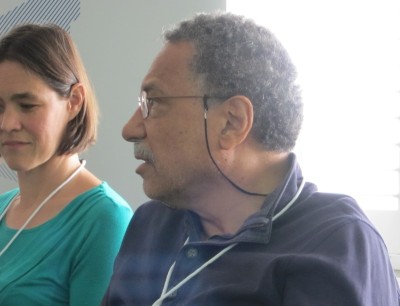 There was Jurgenne Primavera, scientist emerita, Southeast Asian Fisheries Development Center (SEAFDEC) in the Philippines, sharing her transformation from a well-established shrimp aquaculture researcher into the leading authority about mangrove protection in the region.
There was Jurgenne Primavera, scientist emerita, Southeast Asian Fisheries Development Center (SEAFDEC) in the Philippines, sharing her transformation from a well-established shrimp aquaculture researcher into the leading authority about mangrove protection in the region.
Some of the young scientists had already travelled different parts of the world in the pursuit of their questions about the oceans and how to protect them more effectively.
The story each participant shared in answering the introductory questions also had the effect of pulling the curtain apart to see the personal relationship with the ocean behind the budding or already confirmed and outstanding scientist, the up-and-coming artist or the practitioner.
Their connections to the sea were as diverse as can be, but they all had in common to be curious about meeting people with different backgrounds they would not often cross paths with in their ordinary professional lives. So the scene was set to enter into the programme of the week.
Appreciative Inquiry
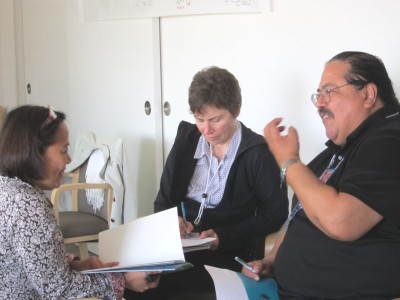 Cornelia introduced the method called Appreciative Inquiry (AI). Participants were invited to form groups of three on a voluntary basis to tell each other about a positive experience each one has had.
Cornelia introduced the method called Appreciative Inquiry (AI). Participants were invited to form groups of three on a voluntary basis to tell each other about a positive experience each one has had.
In three rounds of about 10 minutes respectively, each participant took on a different role:
- of the story teller,
- of the reporter taking notes and
- of an observer asking clarifying questions to ensure the key points came across and were recorded accurately.
Each reporter obtained a simple worksheet to record the name of the reporter, the owner and title of the story, why the story teller considered it a good experience and what made the experience into a “success story”.
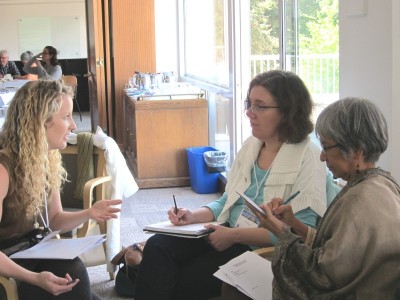 After a little more than half an hour, all participants gathered outside on the terrace with view on the sea and the mountains to harvest a sample of stories.
After a little more than half an hour, all participants gathered outside on the terrace with view on the sea and the mountains to harvest a sample of stories.
Several people volunteered their experiences. Among the reasons for good experiences, the participants noted:
- Overcoming obstacles through perseverance,
- Gaining or giving access to knowledge,
- Rediscovering self, one's cultural identity, reconnecting to ocean, family, dream in life ...
What were contributing factors?
- Teaming up with like-minded others,
- Pioneering an inclusive approach,
- Doing it rather than waiting for endorsementby “experts”, in particular “no data” is no excuse for no action,
- Listening, being respectful of others and their perspectives and learning.
Conversation with the ocean
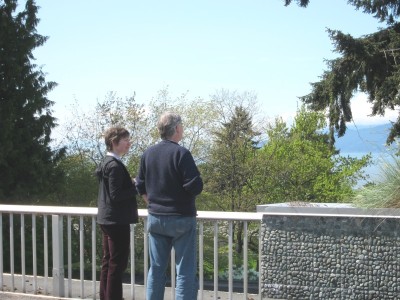 Ngaio asked participants to pair up with someone else and use approximately 45 minutes to connect to the ocean in whatever spot they felt allowed them to do that and listen to what the ocean tells us, what the issues are and how does it speak to us? What are the sensations, images, ideas, words and connections that it reveals?
Ngaio asked participants to pair up with someone else and use approximately 45 minutes to connect to the ocean in whatever spot they felt allowed them to do that and listen to what the ocean tells us, what the issues are and how does it speak to us? What are the sensations, images, ideas, words and connections that it reveals?
Upon return, in the checkout for the day, the participants expressed many different thoughts that had been evoked during the walk.
Check-out – What did the ocean tell us?
The AI compared somehow to the human experience with the ocean, yet can not model perceptual experience.
The metaphore of the sea as the inmeasurable and infinite – conveys a different sense of the quantifiable place, where we are.
The effects of climate change: sealevel rise, acidification, migration of marine species and humans are already being observed.
In conclusion of this first day spent together, key listeners Rashid, Cornelia and Sarah captured some of the impressions collected from the conversations. They expressed their gratitude for the openness of participants to engage with one another and with the central theme of the workshop sharing generously their professional and often very personal perspectives and experiences.
While using different means of inquiry in the sciences, in the arts and in action in the search for making sense of the world surrounding us, we had found ways of respectful communication that brought out some new insights and compatibility between the different findings, which are indicative of the robustness of our starting point.
Day Two - What do we already know?
Welcome and check-in
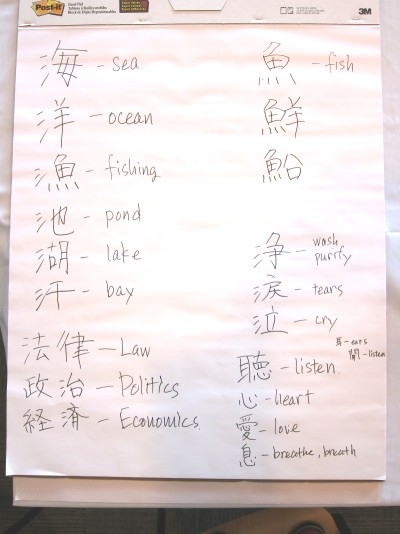 The day started with some reflections about the experiences during the first day and a warm welcome to a few new participants, including Mel Wong, who joined offering her visual reporting skills to the roundtable during Day 2.
The day started with some reflections about the experiences during the first day and a warm welcome to a few new participants, including Mel Wong, who joined offering her visual reporting skills to the roundtable during Day 2.
Every participant contributed his or her perspective about the previous day and newcomers introduced themselves and what had drawn them to the roundtable.
While listening to the individual contributions, it occurred to Naomi that there were deep connections between the stories, which could be more readily expressed in Japanese and Chinese script where terms like sea, ocean, fishing, bay, law, politics and economics share a common root, much like different types of fish, listen, heart and breath do.
She quickly sketched some of the kanji and Japanese kana to illustrate her point.
Mindmapping
Having everybody attuned to the group and the day, Cornelia invited participants to the next step in developing shared understanding and sense-making around the question: what are the issues and challenges that we face for our seas?
Working in world café style groups of four or five per table for two to three rounds of about 20 minutes each, the ground rules were to have one person to accept serving as table host to ensure the continuity of the conversation. The other three or four people at each table then 'migrated' to other tables in successive rounds.
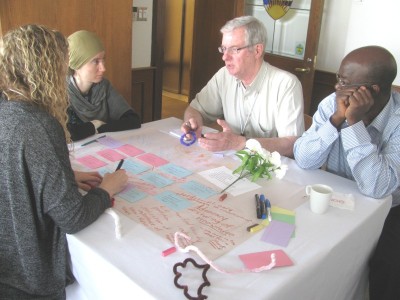 The world café etiquette was spoken and available in printed form at each table to make sure that all ideas and opinions were accepted and received without judgement.
The world café etiquette was spoken and available in printed form at each table to make sure that all ideas and opinions were accepted and received without judgement.
The rich conversations at each table produced lots of ideas and cross fertilised the different perspectives of the participants. At the end, table by table, participants contributed their insights, written in the form of concepts on cards, one idea or concept per card.
They clustered the ideas by affinity to consolidate major themes ("branches") and their ramifications ("twigs") around the central question.
They added up to the following major themes in response to the leading question: Resource overexploitation, pollution, climate collapse, institutions, global capital, social inequality, human affect and emotions and connectedness of issues.
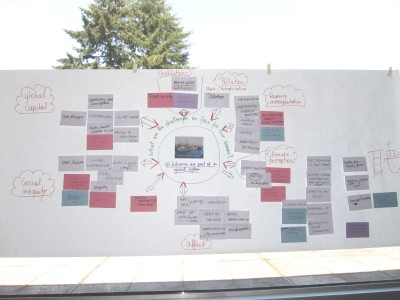 In the final harvesting step participants identified a series of “levers” or entry points for action, what they estimated as most promising to bring about change.
In the final harvesting step participants identified a series of “levers” or entry points for action, what they estimated as most promising to bring about change.
“Prouds” and “Sorries”
Coming back from continued conversations over lunch, Ngaio started the afternoon session on a more reflexive note asking participants to team up in pairs and talk about
• What do I feel proud about that I am doing for these themes or issues?
• What do I feel sorry about that I am not doing or changing within myself?
Everybody could then write anomymously one or more prouds and sorries on a sticky note and post them. That was the perfect transition to the next step in the work flow.
Preparing learning journeys for the next day
Harking back to the principal “levers” or entry points for change, Ngaio then invited participants to propose issues to explore during the next day that would allow them to address one or more of the levers interesting them most and where their skills and contributions could make a difference. The following questions were intended to help form groups and prepare the learning journey that could take part or all of Wednesday:
- What can we learn from this place and its people, what stories can we hear?
- What will help us to explore these issues?
- Who will be our guides?
- How can we share our stories?
- What materials will we need on our journeys?
Three groups quickly came together on the strength of their shared interest in “meeting passionate people to help bring about change”, about the ambition to “engage ordinary citizens with the ocean through a potentially mobile exhibition”, and “producing a video about passionate people”. Some others preferred to go on individual journeys.
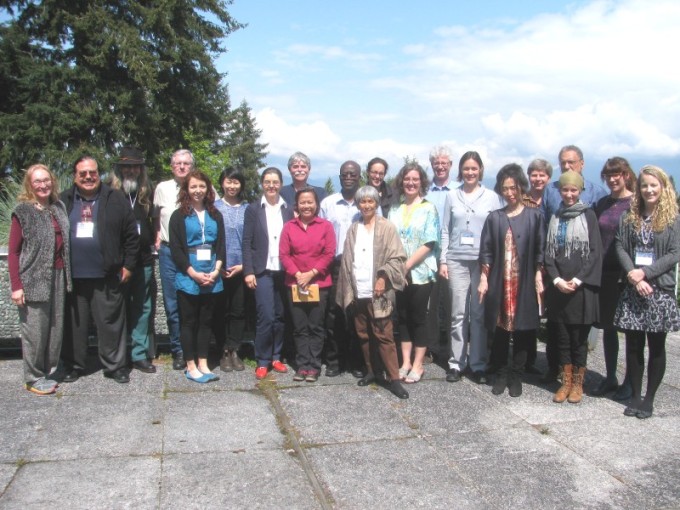
Wrap-up and check-out
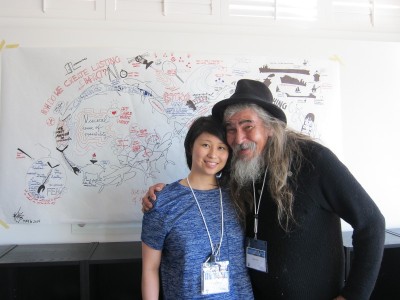 Just two highlights in response to Ngaio's invitation to reflect on their experience of the day:
Just two highlights in response to Ngaio's invitation to reflect on their experience of the day:
“There is so much energy in the room that was not yet there on Monday. It's amazing.”
“We can not imagine change before it comes about. But once it has happened, we can not imagine that change would not have come about. These are the limitations we need to keep in mind when working to support change.”
The visual harvest of an amazing day together was drawn by Mel Wong as the all-connecting life in the oceans forming a cycle which encompasses the creatures, the links between them and human interactions of different kinds. The drawing rendered the rich exchanges perfectly.
Day Three - Practicing: Immersion Learning, Apprenticing
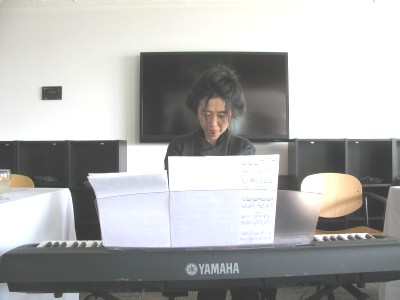 Welcome and Check-in
Welcome and Check-in
To the sound of music offered by Naomi Takagi, the welcome and check-in offered opportunities to reflect on the previous day. What had we learnt yesterday?
It was about a different approach to old and new problems observed, but also the anticipation of new perspectives and avenues towards transformations towards the better.
Having heard everybody's voice in the open circle gave a good grounding for the day.
Learning journeys: embarking with questions
Ngaio explained that teams or individuals going off on learning journeys had all the freedom they needed, staying on campus or moving about town as their objectives required and reporting back in the afternoon or continuing at their pace and debriefing the group on Thursday morning.
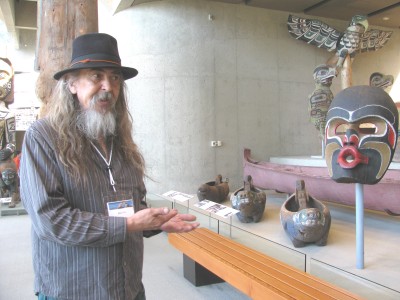 All travellers were invited to take their question about where best to invest their energy ('lever') with them:
All travellers were invited to take their question about where best to invest their energy ('lever') with them:
-
What can we learn about these 'levers'?
-
Are there elements that inspire you?
-
What surprises, scares, inspires and teaches you during your journey?
One group went with Beau Dick to the Anthropology Museum and Beau's art studio to shoot a video about passionate people.
The video was to center on the connectedness between humans across the world and their embeddedness and being part of nature.
Showing some of the traditions of First Nations in Canada and how close they are to the many other migrants making a home in the country was to become the pivotal part of the script. Equally essential was to be how to strive for peaceful coexistence between the human population and the ocean and the natural environment on the land to ensure livable futures for the coming generations.
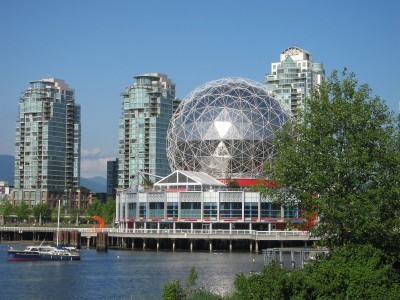 Another group went off to downtown East Vancouver in search of passionate people there. The group wanted to explore what happened in the poorer parts of town in relation to the ocean and life in British Columbia and beyond and what they might work on to live decently today and in years to come.
Another group went off to downtown East Vancouver in search of passionate people there. The group wanted to explore what happened in the poorer parts of town in relation to the ocean and life in British Columbia and beyond and what they might work on to live decently today and in years to come.
A third group visited museums, including the Science World in preparation of an interactive ocean exhibition. Meeting the professionals in these establishments was a great opportunity to confront the initial concept with the experience of curators, communication specialists and other practitioners on how to connect the general public to the arts and sciences.
Individual journeys entailed e.g. writing a concept paper and teaming up with musicians of another roundtable taking place in parallel.
So, all participants went off on their individual or collective learning journeys for the day, deciding to meet again only the following morning for debriefing, thus throwing themselves into the "adventure", senses wide open, but without forgetting each and everybody's professional and personal "baggage".
Day Four - Embodying, Living it Daily, Prototyping
Welcome and check-in
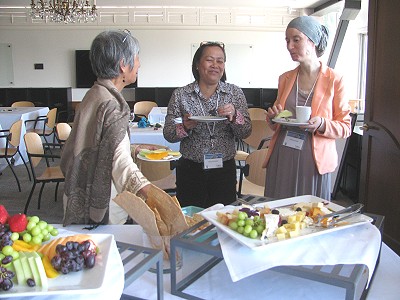 Warming up over coffee and the usual rich mix of croissants and other goodies for breakfast all participants gathered again in the open circle.
Warming up over coffee and the usual rich mix of croissants and other goodies for breakfast all participants gathered again in the open circle.
As a way to reconnect to one another after very different experiences the previous day, everybody was asked to share one image or object from the learning journey.
Having heard all voices, Ngaio explained the flow of the day.
Sharing stories from the journeys
The “video group” met some passionate people in the Museum of Anthropology, where Beau Dick, his apprentice, Cole Speck, and grandson, Ryan Speck, performed with masks embodying the rituals of life through the story of the lost child.
This is the story of a child mistreated by his father out of sorrow for loosing his beloved wife in childbirth. The boy has a miserable childhood and is considered a good for nothing by his grieving and bitter father. He is also not beautiful and uneasy with himself. One day, the boy gets lost in the forest, while leaving the bucket behind at the riverside with which he was supposed to fetch fresh water for his father. The villagers finding the bucket bring it back to the father, who was already getting furious because of the delay of bringing the water home. Now the father's fury turns into worry that his son might have drowned.
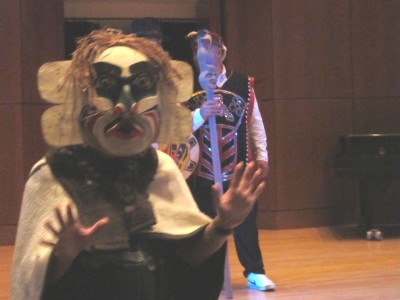 Meanwhile, the boy sets a snare as he is hungry, but falls asleep. Setting snares is the one skill he excells at. In his dream a bird trapped in his snare promises to take him to a good place where the spirits dance. When he wakes, a frees a grouse and meets the shy forest spirits. Each of them gives him a gift.
Meanwhile, the boy sets a snare as he is hungry, but falls asleep. Setting snares is the one skill he excells at. In his dream a bird trapped in his snare promises to take him to a good place where the spirits dance. When he wakes, a frees a grouse and meets the shy forest spirits. Each of them gives him a gift.
The forest spirits represent many characters: the Door to go through into new territory, the Ear to listen to others and deep inside, the sense of humour of men and that of women, and many more.
The characters are represented each one through a different mask. The masks are metaphores for the different values, character traits, skills and competencies needed in life, including those that are ambiguous or even contradictory in nature.
Thus equipped, the boy wakes up and returns to his village. He is reunited happily with his father, who is at long last grateful to have his son.
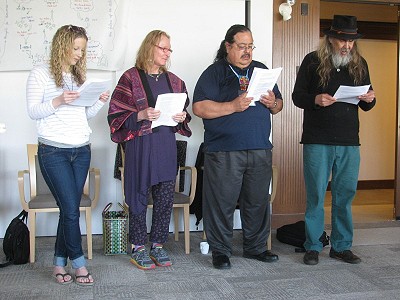 This formed part of the background that the group had explored through their visit in the Museum of Anthropology where several versions of some of the masks are on display.
This formed part of the background that the group had explored through their visit in the Museum of Anthropology where several versions of some of the masks are on display.
The group also viewed and shared in plenary a speech that Beau Dick had delivered in Victoria on the steps of the Legislature at a traditional Copper breaking ceremony in protest of how the government has treated the First Nations people in Canada and the country's environment.
Francisco took this speech, transcribed and then edited it into a poem.
The group performed that poem as part of their "debriefing".
The poem also provided the framing for the video that the group registered on their learning journey in addition to excerpts from a discussion Cole Speck, Beau's apprentice, and the 'passionate young person' that the group went to speak with that day. Meanwhile, the video has been finalised.
Click here to watch it: "We are all connected!".
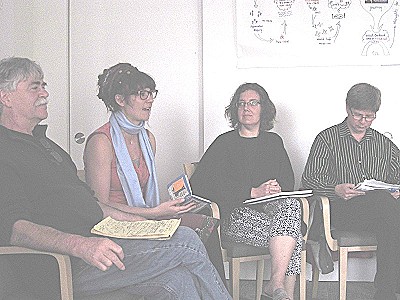 The second group in search of passionate people left campus and explored East Vancouver, the original centre of town a century ago, and now a neighbourhood with many economically poor people. The group found a disconnect between people and nature and food. They attribute that to prevailing policies overlooking environmental problems in favour of attempts to restart the local economy.
The second group in search of passionate people left campus and explored East Vancouver, the original centre of town a century ago, and now a neighbourhood with many economically poor people. The group found a disconnect between people and nature and food. They attribute that to prevailing policies overlooking environmental problems in favour of attempts to restart the local economy.
Galery Gachet has a mandate to empower poor people through art and human-driven approaches as compared to techno-fixes.
The group found seeds of hope and saw how the Galery was providing a space for self healing and innovation, an active practice of solidarity and community.
The group visited another studio, this time of a graphic facilitatory who is working with small groups supporting conversations about possible transformations and expressing these visually.
In Point Grey, the group visited Sole Food Street Farm which creates employment, reintroduces people to farming and offers school programmes, e.g. with 'planting boxes'. The chef of the Four Seasons hotel is making a point to make people appreciate where the fish and the food served is coming from.
In summary the group had discovered communities poor in $, but rich in human relations and full of innovative ideas. Everybody was talking in small-scale terms, but possibilities for replication and scaling up could be identified (though not without problems).
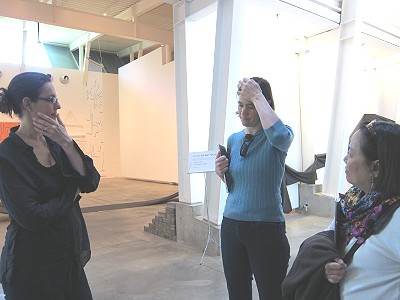 The 'exhibition group' came back from its learning journey with confirmation that the ocean was considered a strong and attractive theme for a mobile exhibition.
The 'exhibition group' came back from its learning journey with confirmation that the ocean was considered a strong and attractive theme for a mobile exhibition.
Setting out in the Morris and Helen Belkin Art Gallery just opposite the roundtable venue, Shelly Rosenblum, Curator Academic Collections, showed the group around the showrooms and other facilities.
A chance meeting with the archivist splitting her time between the Belkin Art Gallery and other institutions led to suggestions of a few avenues towards potentially interested groups.
The conversation focused quickly on testing exhibition concepts on a smaller scale accompanied by research into visitor reactions and engagement. It would certainly be wise to develop prototypes and test the concepts step by step to manage the risks and make the exhibition credible for potential host institutions, such as aquaria and museum.
An experimental workshop with curators, scientists, artists and people from computer animation labs would be a useful stepping stone.
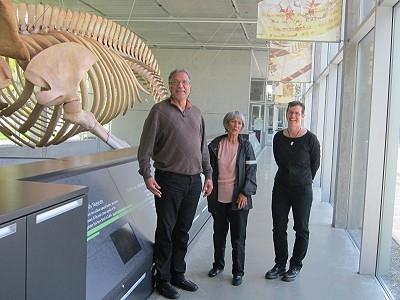 Sally Otto, Fellow Royal Society of Canada, Director of Biodiversity Research Centre, at the Beaty Museum of Biodiversity, walked the group around the spectacular skeleton of a stranded Blue Whale and the extensive underground collections open to visitors.
Sally Otto, Fellow Royal Society of Canada, Director of Biodiversity Research Centre, at the Beaty Museum of Biodiversity, walked the group around the spectacular skeleton of a stranded Blue Whale and the extensive underground collections open to visitors.
The museum encourages visitors to explore more artefacts in drawers and has a much-visited childrens' corner.
The afternoon trip to meet Andrea Durham, Vice-President, Exhibits, Facilities, and Digital Initiatives at Science World, was particularly productive in terms of some dos and don'ts borne out of the institution's own practice and Andrea's long-standing professional experience.The team was very grateful that Andrea was willing to give up twice as much time out of her busy schedule than originally planned.
A visit to Eric Solomon, Director of Arctic Programs in the Vancouver Aquarium, was scheduled for Friday afternoon, after the official end of the Roundtable and also turned out to be both pleasant and highly useful. And, of course, the visit in the splendid aquarium itself the following day was a great experience and warrants repeat visits to appreciate the different sections more fully.
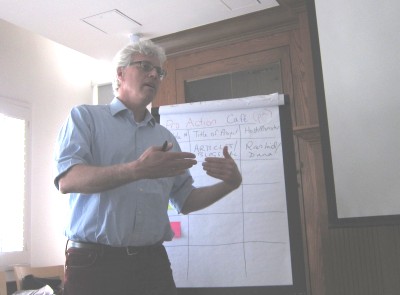 Naomi reported vividly about very productive conversation with the musicians of a parallel Roundtable exploring the use of music for therapeutical purposes.
Naomi reported vividly about very productive conversation with the musicians of a parallel Roundtable exploring the use of music for therapeutical purposes.
Last but not least, Paolo introduced the key concepts underlying the potential of introducing a local currency as a means to rediversify the financial system for greater sustainability and for giving local actors e.g. in the fishing industry and connected businesses a new lease of life.
A wide variety of experiences exists with alternative exchange mechanisms and currencies. One of the biggest in size was a government-backed scheme during the Argentinean financial crisis in the early 2000s, but others existed or exist in Switzerland and many other places. A growing number of economists believes that alternatives to the prevailing monoculture are essential to stabilise the global system that some people fear might collapse with unpredictable consequences. Paolo will, as a result of his learning journey and earlier work on the theme pay a visit to Sardegna in the summer to collect some empirical evidence about this particular experiment that has been running for the last few years.
Open Space Technology – Pro Action Café
 Ngaio and Cornelia then introduced the notion of the open space technology or a market of ideas. Whoever wants to develop a project that had either come out of the learning journeys or that had been a concern of a participant and could be suggested for a conversation, to develop it a step further by taking advantage of the different experiences and vantage points of other Roundtable participants. The proposer comes forward and formulates a question or challenge, which he or she writes down on a 'bill board' matrix with the numbers of tables available. The project promoter makes a short marketing pitch to attract others to his or her table.
Ngaio and Cornelia then introduced the notion of the open space technology or a market of ideas. Whoever wants to develop a project that had either come out of the learning journeys or that had been a concern of a participant and could be suggested for a conversation, to develop it a step further by taking advantage of the different experiences and vantage points of other Roundtable participants. The proposer comes forward and formulates a question or challenge, which he or she writes down on a 'bill board' matrix with the numbers of tables available. The project promoter makes a short marketing pitch to attract others to his or her table.
The working mode is similar to the World Café. The promoter remains at the table as host and keeps a record of the conversation, while other participants come and go for two rounds contributing to the reflection of the question behind the question in the first round and finding out what may still be missing in the second round. The principal difference is that before entering in the third round of conversations, the table hosts / project promoters get a few minutes to distill the next elegant steps for implementing their project. During the third round the same people of the second help to refine that action plan (thu s, there is no additional rotation).
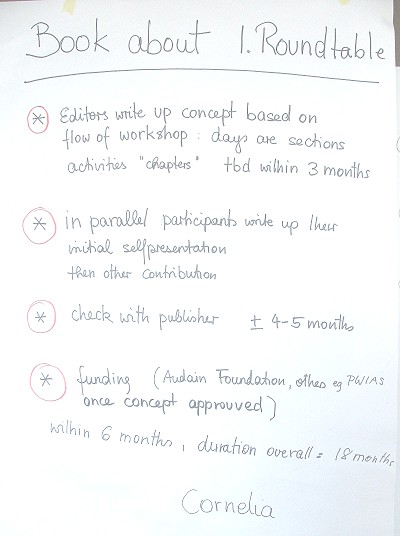 Altogether seven project proposals were discussed:
Altogether seven project proposals were discussed:
- How to model Spaceship Earth? - Alan Mackworth
-
Can we expand the conversation to include eco-theolo gy and build on the aboriginal spirituality introduced by Beau Dick and Francisco Alarcón? - Nigel Haggan
-
What do we need to do to produce a contrasted global video interview about the ocean? - Dyhia Belhabib
-
Can we capture our experience in a book? - Cornelia Nauen
-
What other written output can we produce? - Rashid Sumaila
-
What does it take to bring “FishCoin” on its way? - Paolo Dini
-
A facebook page for Spaceship Earth? - Francisco Alarcón and Sarah Meltzoff.
Promoters were requested to write down the key points of their action plan on a poster to harvest the results in plenary.
As a result of the conversation, the “FishCoin” project was renamed “Fish-Credits” and part of the original ideas for a facebook page will be shifted to the PWIAS and Mundus maris websites
With so many concrete projects and ideas in the room, the wrap up was helped by the visual summaries and a short closing comment by each participants.
Public Event - Conversation with the Ocean
Roy Barnett Recital Hall, 6361 Memorial Rd
8 May 2014, 19h30-21h30
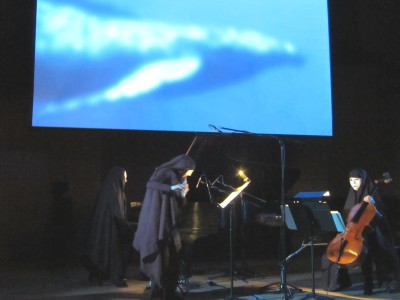 The evening started with an introduction by Prof. Rena Sharon of the roundtable working on the use of music for therapeutical purposes with whom Spaceship Earth co-organised the public event.
The evening started with an introduction by Prof. Rena Sharon of the roundtable working on the use of music for therapeutical purposes with whom Spaceship Earth co-organised the public event.
The remarks were followed by a soprano solo "For broken and tired am I"
Next was a thought-provoking talk by David Maggs about arts and sustainability. He castigated attempts to reduce the arts to mere instrumental techniques for often manipulative purposes e.g. for promoting sales. He contrasted this with the need for a genuinely free and creative space that might more readily meet people's deep desire for beauty and making sense of the world in different and often innovative ways.
The evocative music for electrified flute, cello, and piano ‘Voice of the Whale’ by American composer George Crumb hearkens the mysterious voice of this iconic species, while casting our imagination into what geologists call ‘deep time’. This beautiful piece calling on all senses enthralled the audience.
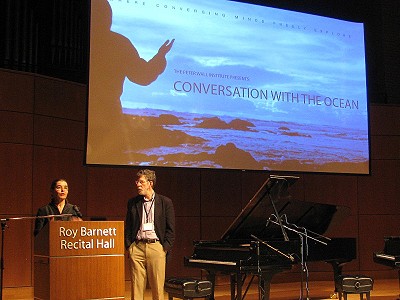 The break offered opportunities for conversations among the audience and also to provide some written feedback and suggestions to the roundtable participants.
The break offered opportunities for conversations among the audience and also to provide some written feedback and suggestions to the roundtable participants.
Cornelia Nauen then spoke about the Spaceship Earth roundtable starting with an acknowledgement that the event was taking place on the unceded territories of Canada's First Nations and offering some reflections and thanks.
The surprise appearance of some of the masks of the forest spirits took the audience straight into the story of the Lost Child, which Beau Dick had explained during the learning journey on Wednesday.
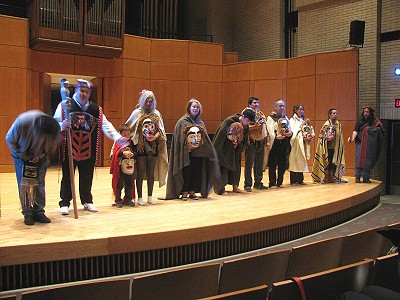 The Ear, the Door and others emerged from the corridors on both sides of the hall slipping into some of the rows and approaching the seated audience off-stage. Little by little the spirits converged first in front of the stage and then climbing up onto the stage to perform some of scenes of the story.
The Ear, the Door and others emerged from the corridors on both sides of the hall slipping into some of the rows and approaching the seated audience off-stage. Little by little the spirits converged first in front of the stage and then climbing up onto the stage to perform some of scenes of the story.
Orchestrated by Beau Dick and a master of ceremony, it was a stark reminder of what we can learn from each other and our respective cultures.
And thanks to the hearts opened by the music, the audience was very receptive and willing to engage.
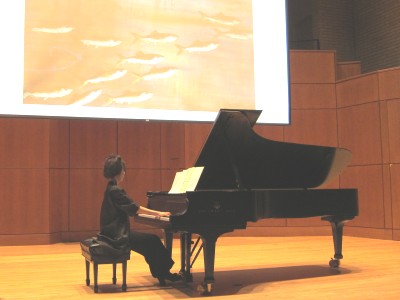 The impromptu performance left a special atmsphere. Just the right one for Naomi Takagi to take the audience further into a mood of listening to the music and inside themselves while viewing paintings by Robi Smith.
The impromptu performance left a special atmsphere. Just the right one for Naomi Takagi to take the audience further into a mood of listening to the music and inside themselves while viewing paintings by Robi Smith.
She first played a piece just composed by her sister for the roundtable and then several parts of the Goldberg Variations by Johann Sebastian Bach.
Time flew by and after another song it was time for concluding remarks and reflections on the commentary received from the audience during the break.
That role fell to Rashid Sumaila, one of the three principal investigators (together with Cornelia E Nauen and Sarah K. Meltzoff) of the Spaceship Earth roundtable.
Before we knew it, the evening and a very intense day overall came to an end. How much can be packed into a day and finish it with more energy left!
Day Five - Actioning
Welcome and check-in
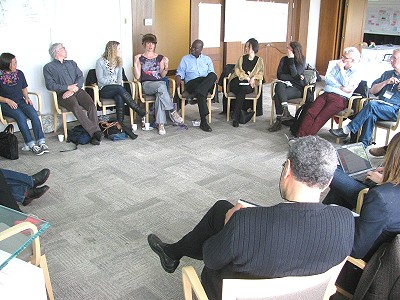 Welcoming Eric Solomon of the Vancouver Aquarium, who was drawn to the roundtable by its purpose, the diversity of participants and the connections to his own work as Director of Nordic Programme and connected to many of the aquarium's educational efforts, the day got off to an excellent start.
Welcoming Eric Solomon of the Vancouver Aquarium, who was drawn to the roundtable by its purpose, the diversity of participants and the connections to his own work as Director of Nordic Programme and connected to many of the aquarium's educational efforts, the day got off to an excellent start.
Then the stories from the week were the focus of the open circle. What stories will we remember and share from this week? What actions have they inspired?
In addition to the projects identified with concrete implementing steps the previous day, additional ideas for concrete activities to undertake.
Other reflections were about something to change in the approach to one's work, a few new collaborations, a fresh resolve to carry the spirit of the workshop into our next plans and activities.
The harvest of the four previous days was rich in quality as well as in quantity of activities, some already underway and more planned.
Write a short letter
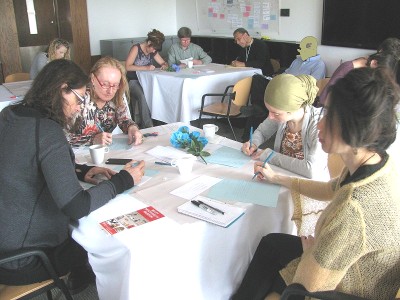 Ngaio then invited everybody to write a short letter to oneself or to a participant of the roundtable, mark the address on an evelope and hand it to her. She encouraged to include some feelings or idea they wanted to capture.
Ngaio then invited everybody to write a short letter to oneself or to a participant of the roundtable, mark the address on an evelope and hand it to her. She encouraged to include some feelings or idea they wanted to capture.
She promised to post the letters in six months time as a way to remind each one about the roundtable, its atmosphere, the energy in the room and what participants had agreed to do.
As Dana Miller explained from a previous occasion where she had written a letter to herself as a child which she retrieved recently, the experience was amazing. It helped to cast light on the state of mind earlier and was a powerful reminder of hopes and dreams, some coming true, others not or transformed.
So the participants might be surprised about what we'll read in six months time – or not.
Wrap up
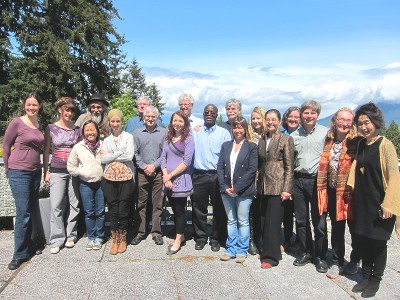 Rashid, Sarah, Cornelia and Ngaio spoke one after another about their gratitude for the wonderful collaboration everybody had demonstrated. This together with preparations among the organisers, including the friends from the The Living Wholeness Institute, Maria Scordialos and Vanessa Reid, had been the key to making this innovative meeting format a good experience. This was not only felt atmospherically, but also in terms of agreed practical activities spawned out of the conversations.
Rashid, Sarah, Cornelia and Ngaio spoke one after another about their gratitude for the wonderful collaboration everybody had demonstrated. This together with preparations among the organisers, including the friends from the The Living Wholeness Institute, Maria Scordialos and Vanessa Reid, had been the key to making this innovative meeting format a good experience. This was not only felt atmospherically, but also in terms of agreed practical activities spawned out of the conversations.
The organisers promised to deliver an illustrated newsletter and follow-up on the other commitments.
Closing circle
One by one, participants spoke about, where they had started, where they positioned themselves now and how they intended individually and with others to move from call to action. All expressed awareness about the difficulty of carrying on once back to their everyday lives, but thought of practical ways to overcome the risk.
The last words were of thanks to the Peter Wall Institute for Advanced Studies for generously feeding and funding the gathering. Cornelia extended special thanks to Ngaio for skillful hosting.
With that the roundtable closed and participants dispersed back into their ordinary working environments. As this chronicle is being written, contacts continue in pursuit of leaving a mark well beyond the walls of the comfortable settings of the Peter Wall Institute for Advanced Studies.








